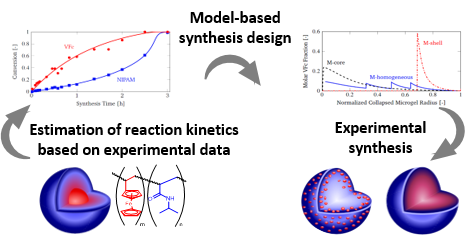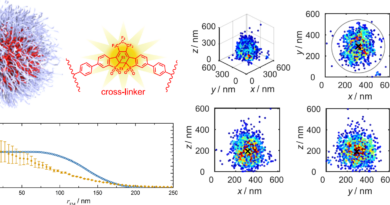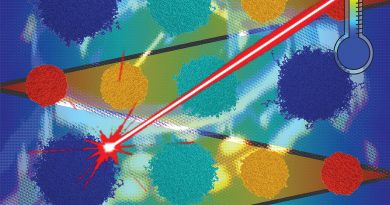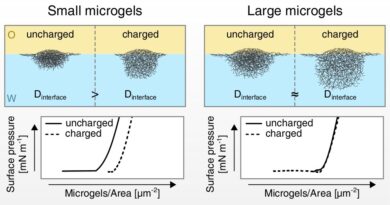Model-based design and synthesis of ferrocene containing microgels
Microgels have versatile applications due to their possible functionalization with co-monomers. We present the rational model-based design of synthesis procedures for vinylferrocene (VFc) containing poly(N-isopropylacrylamide) (PNIPAM) microgels with three different localizations of vinylferrocene in the
microgel. First, we estimate the kinetic copolymerization parameters of NIPAM-VFc microgel synthesis based on the published experimental conversion data. Second, we determine synthesis procedures for the desired localization of the functional co-monomer in the microgel based on the model. Third, we run
the respective synthesis procedures experimentally and the obtained microgels are analysed using cryogenic transmission electron microscopy, scanning transmission electron microscopy, dynamic light scattering, and elementary analysis. The experimental results agree with model predictions. They show that
aside from core-shell microgels with a VFc-rich core, an inverted structure with VFc-rich clusters in the shell of the microgel can be synthesised. Moreover, feeding VFc multiple times during the synthesis gives access to homogeneous P(NIPAM-co-VFc) microgels. Dynamic light scattering experiments reveal that
the structure variation does not significantly influence the swelling properties of the thermoresponsive microgels. The synthesis procedures derived from the model did not require any additional adjustment to yield the desired architectures experimentally. Hence, we showed that model-based methods can be applied for the rational determination of synthesis procedures for microgels with a specific localization of ferrocene.
Sabine Schneider, Falco Jung, Olga Mergel, Janik Lammertz, Anne C. Nickel, Tobias Caumanns, Adel Mhamdi, Joachim Mayer, Alexander Mitsos and Felix A. Plamper
Polym. Chem., 2020, 11, DOI: 10.1039/c9py00494g




